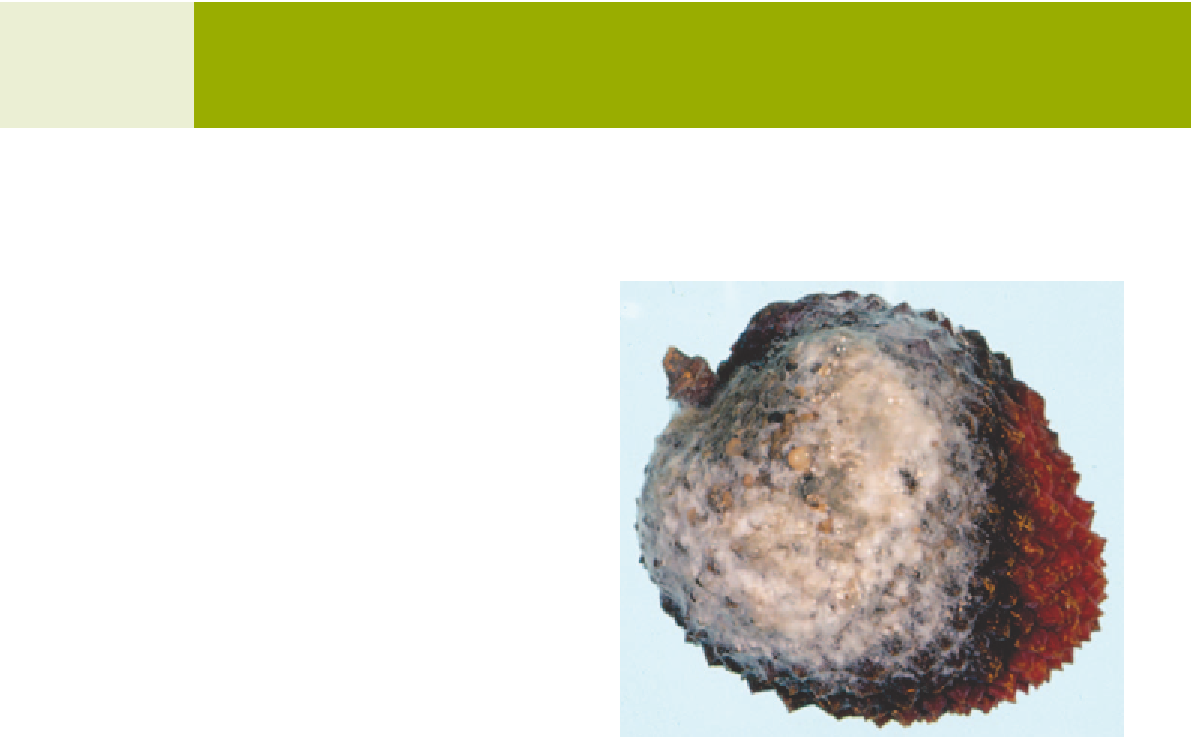Agriculture Reference
In-Depth Information
10
LYC HEE
(
Litchi chinensis
)
Lychee is an evergreen, subtropical fruit tree native to
southern China. Lychee is grown in a number of
subtropical and tropical countries for its desirable high
value fruit. The lychee is a member of the Sapindaceae
family, which includes fruit trees such as longan
(
Dimocarpus longan
) and rambutan (
Nephelium
lappaceum
).
Lychees were introduced into Australia in the 1880s,
although they were not planted for commercial production
until the 1970s. Currently, lychees are produced mainly
along the east coast of Australia from Cooktown in north
Queensland to Coffs Harbour in central New South Wales.
ANTHRACNOSE
■
Cause
The fungi
Colletotrichum gloeosporioides
and
Colletotrichum
acutatum
.
Fig 10.1 Anthracnose lesion with pink spore masses.
Symptoms
Round, dark brown to black lesions develop on the surface
of the fruit. Under high humidity, a pink mass of spores
may develop on the surface of the lesions. The disease
rarely penetrates the f flesh of fruit.
Management
•
Use appropriate fi eld sprays of fungicides to prevent
infection.
Remove dead limbs and mummifi ed fruit from trees to
reduce inoculum.
•
Source of infection and spread
Dead leaves, branches and mummified fruit may act as
inoculum sources. Spores of the fungus are spread by rain
splash, and warm wet weather favours infection. The
fungus usually penetrates the fruit pericarp directly and
remains quiescent until after harvest. The fungus may also
infect fruit through wounds in the pericarp (e.g. insect
damage).
After harvest, cool the fruit quickly and store fruit at 5
°
C.
•
The control measures for anthracnose may also provide
control of other postharvest diseases.
STEM-END ROT
■
Cause
A number of fungi may be responsible for the development
of stem-end rot; most commonly
Phomopsis
spp.,
anamorphs of
Botryosphaeria
spp. and occasionally
Colletotrichum
spp.
Importance
The disease most often manifests as a postharvest disease
but can also affect ripening fruit in the field. Occasionally,
the disease can develop on immature fruit and cause them
to abscise. In severe cases of postharvest anthracnose where
the fungus penetrates the f flesh of the fruit, the f flesh may
be tainted with off f lavours.
Symptoms
Lesions appear as browning of the skin at the stem-end of
the fruit and may expand rapidly. Under humid conditions,












